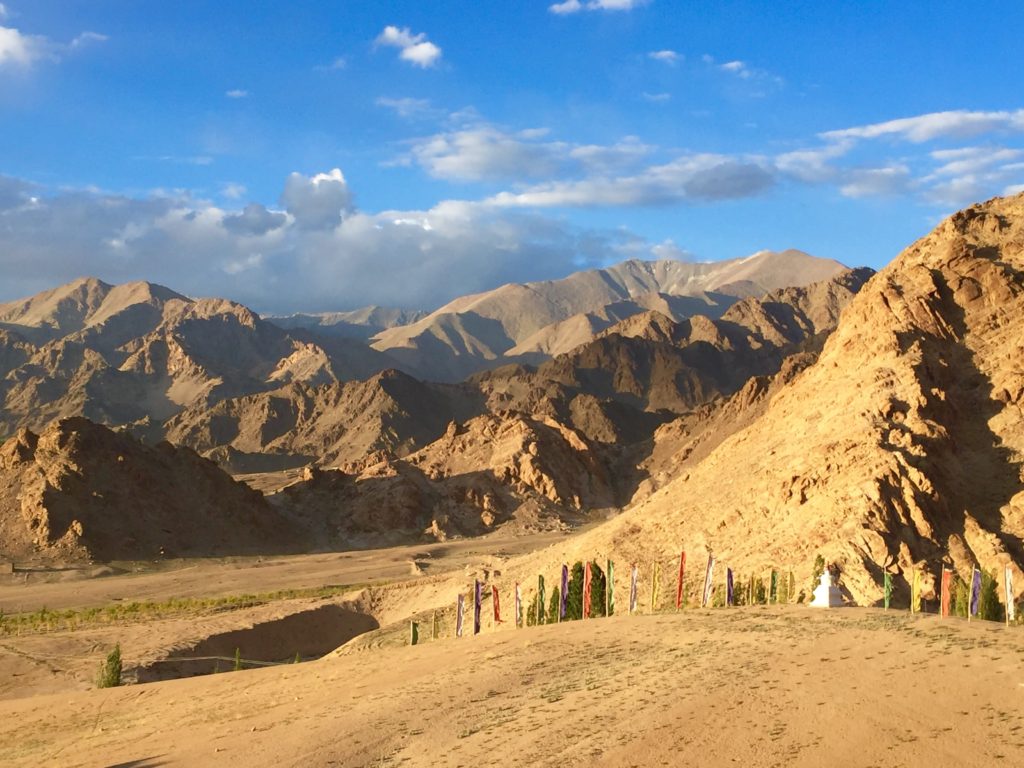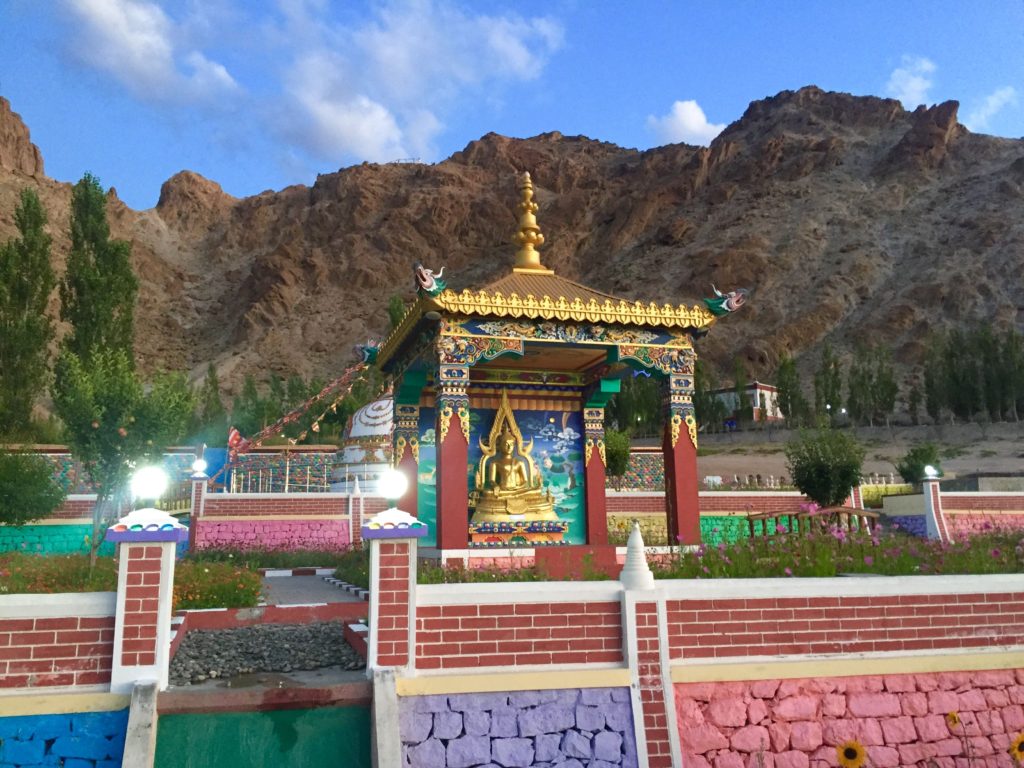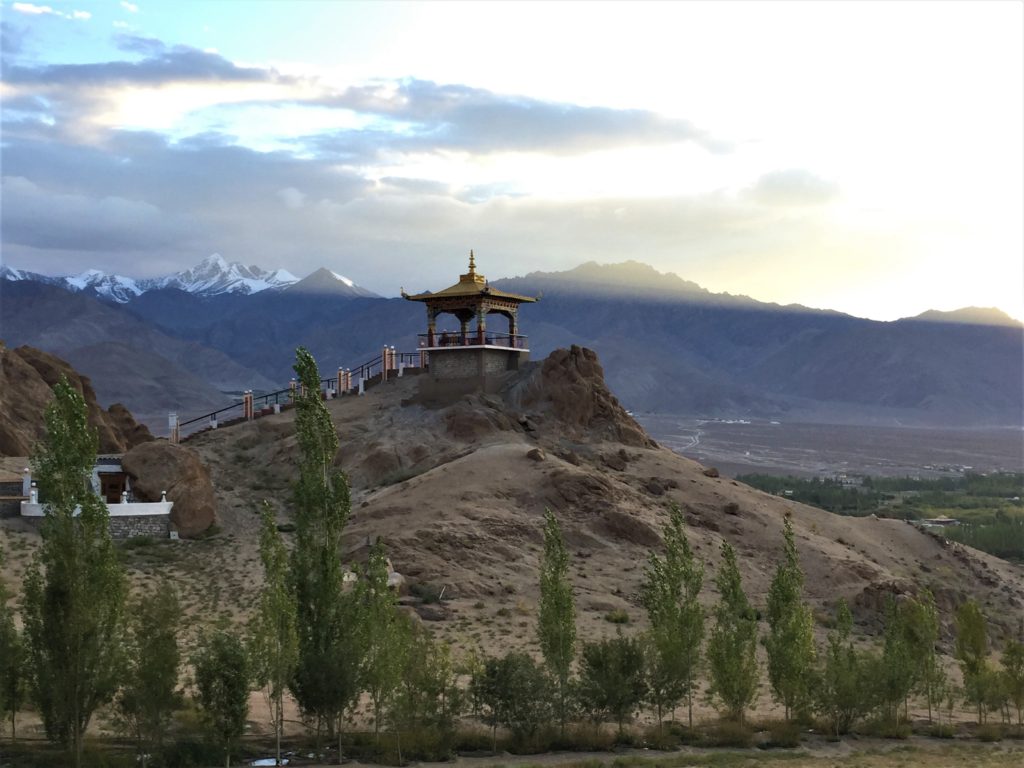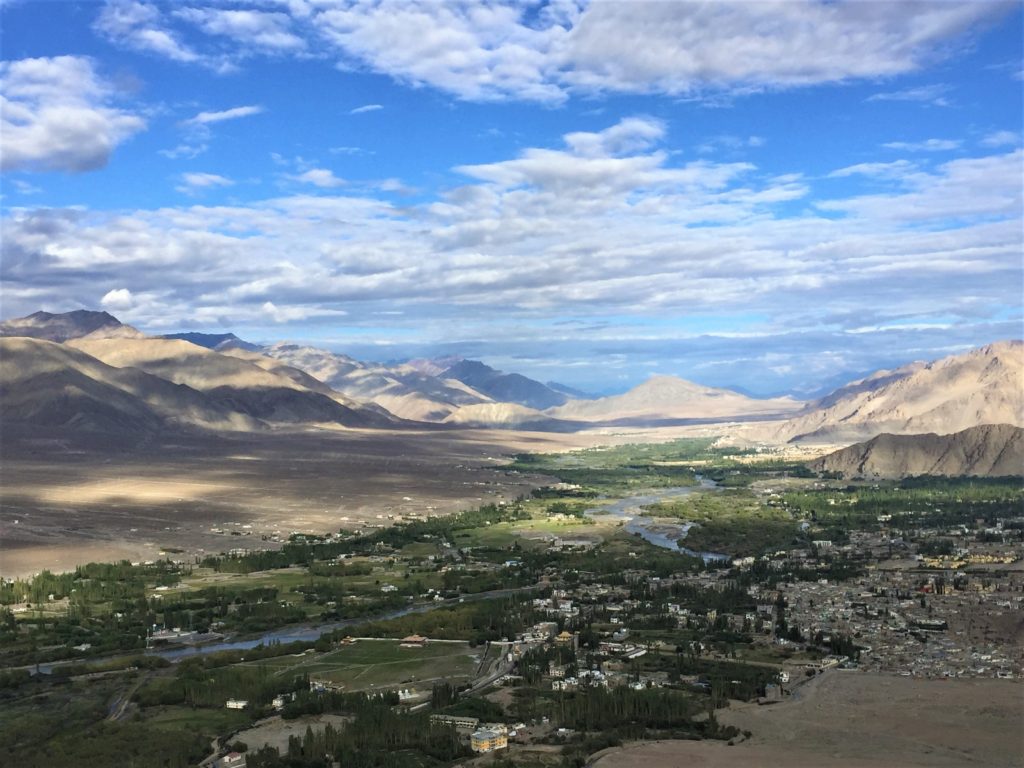So you’re in Leh. You’ve trekked all the trails and you’ve tried all the German Bakeries. You’ve been to all the monasteries and now you’re wondering what to do next. That was me recently, and I decided to go on a three-day Silent Meditation Retreat: a peaceful withdrawal into the foothills of the Himalayas, away from everyday concerns, lots of meditation, healthy plain food, turning my focus inward…besides, what could be better than three days of total quiet? A lot of things, probably, but I still wanted to give it a go.
Noble Silence: that’s what it’s called, I didn’t make it up. But a three-day retreat into silence and meditation is not to be confused with Vipassana. Vipassana, which means ‘to see things as they really are’, is one of India’s most ancient techniques of self-observation. A remedy for universal fails, it aims for the total eradication of mental impurities and human suffering, and apparently results in the extreme happiness of total liberation. The kind of happiness you can only find within. To me, it sounded like setting the bar pretty high. A Vipassana retreat is a grueling 10 days of silent meditation in an environment that, from what I understand, bears striking resemblance to a prison.
No need to go (literally) crazy, I thought, on my first time out. So I signed up for the next short course advertised at a Meditation Centre in Leh. A sort of Vipassana for Beginners.
The ‘silence’ part appealed to every inch of my introverted being. I’m basically on a self-imposed silence retreat most of the time, it’s just that other people would mainly call it being anti-social. But the lengthy meditation sessions had me worried. Could I clear my mind of chatter and distraction – could I, for example, resist the urge to use a meditation session to write this very post in my head?
I’d attended a couple of guided meditations already. They were only an hour long, but the monk leading them seemed to have lofty expectations. At the end of every session he would demand to know if each participant had seen a ‘white light’ (I didn’t) and then he made it quite clear that there was something deeply wrong with anyone who hadn’t, and they should come to his Chakra Healing Centre up the road. It aggravated me – a lot, actually. My strong reaction seemed to fit in the category of ‘mental impurities and human suffering’ and so I filed it away under ‘Reasons Why I Should Probably Try a Silent Meditation Retreat’.
After all, trying something new wouldn’t hurt. Certainly wouldn’t hurt as much as my back does from an hour of sitting cross-legged on the floor. And that’s what travel is all about, anyway: back pain. No, really, it’s about pushing yourself beyond the limits of your normal comfort zone. So off I went to the retreat centre in the mountains.
Spoiler alert: I did not achieve enlightenment…but the pushy monk wasn’t there so I don’t think I was expected to.
Noble Silence Descends
The retreat centre is out of town: a small clutch of buildings set in the midst of flower gardens and fruit trees, surrounded by mountains.


Arriving late in the afternoon I met the course leaders and learned the retreat rules, the most obvious of which is ‘No Talking’. ‘No Phones’ was right up there, too. Each participant – we were a group of about ten – signed a form agreeing to some pretty reasonable precepts, such as ‘No Harming Any Living Being’, ‘No Harsh Speech, Lying and Gossip’ (hard to do anyway when you can’t speak), and ‘No Taking What is Not Yours’. No big deal. Also on the list, ‘No Drugs or Alcohol’, and to maintain celibacy. It’s three days, for frick’s sake. Then the instructor encouraged us to think about our reasons for participating (…learning how to manage uncontrollable anger when monks suggest chakra healing?).
The Noble Silence went into effect immediately and we ate a simple dinner without speaking. Some novice nuns showed us to the separate male/female dormitories, where we chose our bunks and went to bed. The only noise in the dorm came from a cricket outside.
A Day in the Life of an Ascetic
5.30 am. A gong rings in the darkness. It sounds like it is right next to me, but I can’t tell where it’s coming from. Doesn’t matter. It’s time to get up. Let me tell you: there is no better place for a non-morning-person, since everyone is actually forbidden from saying good morning. I think about imposing this rule at home.
6 am. I’m in the meditation hall sitting rigidly upright on a hard cushion. My spine is gracefully straight. Or it’s meant to be…I suspect it’s actually curved like a hunchback’s. We meditate for thirty minutes until the nun rings a tiny bell to ‘draw us back into the room’. I do not have far to go; I’m very much present and aware that my left foot has fallen asleep. The next hour and a half go to meditation and a Dhamma talk – the teachings of the Buddha.
8 am. There’s dal and oily rice for breakfast. Then, we’re free for two hours to walk in the grounds or rest. Rest is highly encouraged. Fine by me; I’ll take a nap. At 8.30 in the morning.
10 am. Back to the meditation hall for three kinds of meditation: seated, walking, and guided. The walking meditation – more of a shuffle really, sensing the connection between my bare feet and the earth at every step – if I could master that alone, the retreat would be a success. I’m a fast-walker, the kind of person who sighs impatiently behind others on the sidewalk. Reveling in the sensation of the ground under my feet – not so much my thing. Even walking half as fast as normal I’m still twice as fast as everyone else. Whatever, I have really long legs.
12 pm. I discover that there is more variety to the meditation than to the food: another meal of dal and oily noodles awaits. Then we have free time. But it’s not exactly free time: one girl has asked if she can draw as a means of expression but she’s been strongly discouraged in that pursuit. Even reading and writing are off limits. Napping it is.
2 pm. Meditation. From nowhere, an episode of Game of Thrones drifts into my mind (peaceful, I know) and I realise that I can’t remember Cersei’s name. That, and the fact that I’m not supposed to think about it, is all that I can think about.
4 pm. Tea break and yoga. The stretching feels fantastic.
6 pm. We do everything slowly and mindfully and I’m starting to enjoy it (except at meal time. I just can’t savour that much starch). After dinner, there’s time to walk in the flower gardens and watch the sunset in the mountains.
8 pm. Group meditation, closing with a metta meditation. Metta means benevolence and it’s a loving-kindness type of meditation where you direct your best wishes towards other people. We think of the people we love, and people we like or admire, and even people we have difficult or dysfunctional relationships with – and radiate good will, best wishes, and loving kindness towards them in our thoughts.
10 pm. Bedtime. I lie in my bunk thinking about metta meditation. It’s an emotionally calming way to end a day – and something else to bring home.

Rinse and Repeat
All three days followed the same schedule with a few twists, like an early morning climb high into the hills to meditate overlooking the Indus Valley, or meditating in an artificial cave. On the third morning we walked to a large bell in the middle of the campus, to ring it for World Peace.

The nun leading our course was particularly good at guiding each person in their personal meditation practice. She was always ready with instruction on method and techniques, suggestions for comfortable positions, and supportive encouragement.
And by the middle of the second day I found it much easier to sit down on my cushion, quiet my mind, and remain still for thirty or forty-five minutes at a stretch. At the same time, the life of an ascetic (or the diet, anyway) got to me and I broke the silence and requested some raw vegetables for dinner. What’s worse – speaking, or eating a raw vegetable? I’m not sure.
Next Up: Chakra Healing? Probably Not.
So much physical inactivity is really hard! And constantly strolling in the gardens had me feeling like a mental patient. I didn’t see a white light, and I still won’t be signing up for any chakra healing sessions either. I also learned that even a three day course is not at all like a wellness retreat, which is sort of what I’d envisioned – you know, along with all that meditation – a massage, some yoga, green smoothies, reading in the garden, maybe watching a bit of Netflix in bed.
During meditation we’re encouraged to merely observe thoughts as they flit in and out of our minds: like clouds drifting past in the sky. Observe each one and let it float by, without judgment, without analysis. In one of our sessions the nun warned us against setting unrealistic goals like ‘I’ll wish for world peace and then meditate for two hours every day before sunrise’ as people so often do when they come away from a retreat. But the concept of just letting a thought go by without reaction, without judgment – observing it only with loving kindness – is definitely achievable and something well worth mastering.
As for the ten day Vipassana: well, let’s just say I’m saving that for later.
About the Retreat
Interested in trying a retreat? Here’s what you need to know:
Signing Up: the retreat I attended was organised by Mahabodhi International Meditation Centre, located in Leh on Changspa road. Upcoming retreats are advertised there. They run regularly during the summer months.To sign up you simply leave your name and a small deposit, paying the balance when you arrive at the retreat.
There is a library/bookshop full of Buddhist teachings and literature at the Centre. They also offer daily guided meditation and yoga classes for a very small fee, according to a posted schedule. The Centre does extensive charitable work locally and internationally.
At the Retreat Centre: retreats are held at the Sambodhi Retreat Centre, about ten kilometers outside of Leh, near Choglamsar village. Retreats are led by a monk or nun and centre employees, and are non-sectarian events – everybody and all faiths are warmly welcome.
Accommodation: simple but warm and comfortable dorms (separate for males/females) with bunk-beds and shared bathrooms. There is electricity, not that you are meant to use it to charge your phone…there is no wifi. If you don’t like dorms you can pay a bit more to stay in your own private room. All the simple vegetarian meals are taken in the dining hall.
Getting There: if you’re staying in Leh you can easily walk over to the main centre on Changspa road. When you sign up for a retreat, they’ll organise shared transport for you from there to the retreat centre, and back again.
Cost: the three day retreat costs a very reasonable 5500 rupees (around 75 USD). That’s for everything: your transport, food and accommodation, plus every aspect of the course.
Bring: toiletries (including toilet paper), hiking shoes, and comfortable clothes taking the mountain weather into consideration. You should dress modestly (no tank tops or shorts, no tights outside of the yoga class, etc.)
Read More
For more of my adventures (and misadventures) in India, check out the rest of my stories from the road.




This Post Has 2 Comments
Thank you for your information .. I will gladly give this 3 day retreat a try.. i was worried about the 10 day Vipassana …
That’s great! Enjoy it! Yeah I know what you mean, I have not worked up the nerve for Vipassana yet either:)